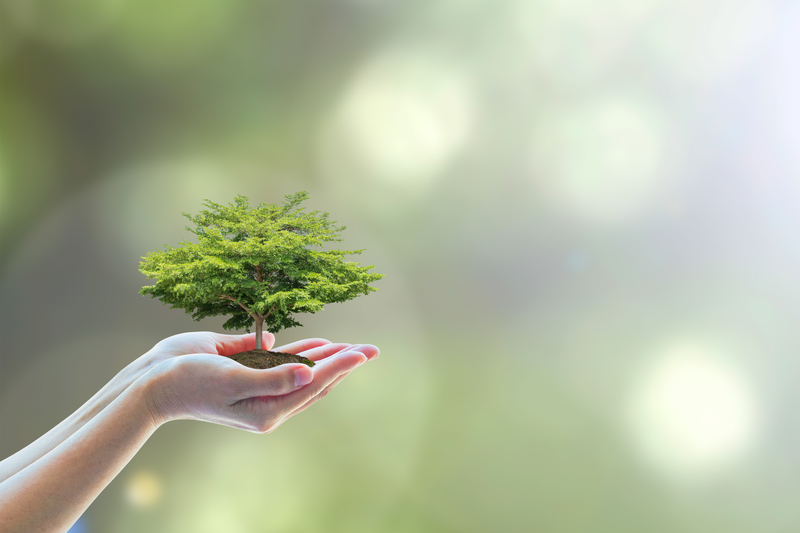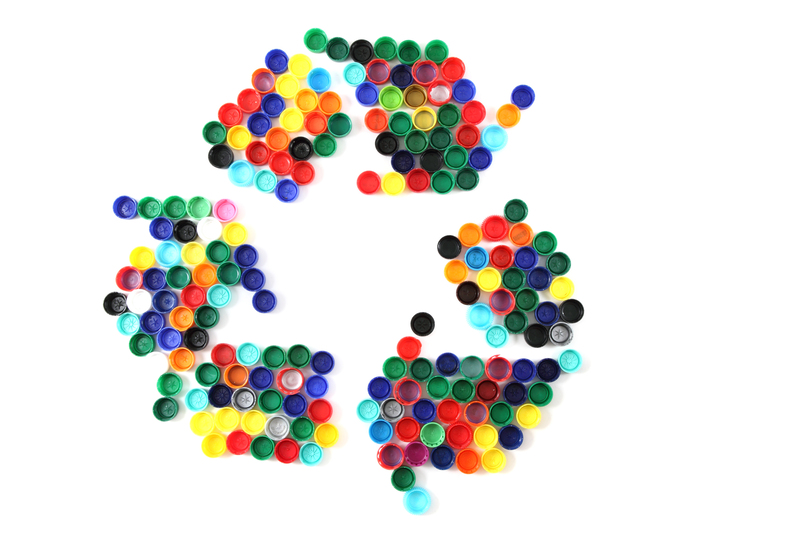Eco-Friendly Upcycling: Turning Broken Items into Conversation Starters
Upcycling has taken the world by storm, transforming how we perceive waste. Instead of discarding broken or old items, eco-friendly upcycling is all about reinventing them into unique, conversation-worthy creations. This not only benefits the environment, but also sparks creativity, enhances home aesthetics, and can even help you save money.

What Is Eco-Friendly Upcycling?
Eco-friendly upcycling refers to the creative process of giving a new life to items that are damaged, outdated, or no longer serve their original purpose. Unlike recycling, which often breaks materials down to make something new, upcycling involves reimagining and transforming items in their current state wherever possible.
Key aspects of eco-friendly upcycling include:
- Reduction of landfill waste
- Personalization of everyday items
- Resourcefulness and sustainability
- Minimization of carbon footprint
- Stimulating creativity
*Eco-conscious individuals around the globe are embracing upcycling as a practical way to support a greener lifestyle.*
Why Upcycle Broken Items?
There are plenty of compelling reasons to consider upcycling old or broken items instead of tossing them away:
- Environmental Impact: Every item diverted from landfill reduces pollution and conserves resources.
- Cost Savings: Upcycling save you money on buying new products.
- Unique Style: Upcycled items add personalized, one-of-a-kind character to your home.
- Fun Projects: DIY upcycling ideas are fun activities for families, friends, or solo creators.
- Conversation Starters: Upcycled objects often have a rich backstory, making them great talking points.
Eco-Friendly Upcycling Ideas to Try at Home
Want to get started with eco-friendly upcycling and turn your broken items into conversation starters? Here are some practical and stylish ideas you can try at home:
1. Broken Furniture Revival
- Cracked Chairs: Remove broken legs and mount the seat on the wall as a vintage shelf.
- Old Tables: Use the tabletop for a chalkboard or memo board in your kitchen or office.
- Dresser Drawers: Repurpose them as under-bed storage or chic wall-mounted boxes.
2. Reimagining Glass and Ceramics
- Upcycle broken mugs into mini succulent planters.
- Turn shattered glass into eye-catching mosaic art for garden paths or walls.
- Use fragments of colorful plates to decorate mirror or picture frames.
3. Electronic Component Art
- Create geek-chic wall decor from outdated circuit boards.
- Fashion bow ties, brooches, or keychains out of old keyboard keys.
- Assemble a quirky desk organizer from broken tech pieces.
4. Fabric and Clothing Transformation
- Repurpose worn jeans into tote bags or quirky pillow covers.
- Use scraps from torn shirts to craft colorful patchwork quilts.
- Turn old socks into plant holders or adorable plush toys.
5. Upcycled Lighting & Fixtures
- Convert cracked teapots or pitchers into charming pendant lights.
- Transform a broken bicycle wheel into a modern chandelier frame.
- Light up your garden with tin can lanterns made from dented cans.
Benefits of Upcycling Broken Items
By opting for sustainable upcycling, you're not just adopting an eco-friendly lifestyle. Here's what you and your community gain:
1. Environmental Conservation
- Reduces waste sent to landfills and decreases pollution
- Less demand on raw material extraction and manufacturing energy
- Encourages a more circular economy by extending the life cycle of products
2. Personal Satisfaction and Creativity
- Provides a sense of accomplishment and creative fulfillment
- Encourages skill development and problem-solving
- Each project becomes a reflection of your unique taste and story
3. Economic Advantages
- Saves money by delaying the purchase of new items
- Upcycled creations can be sold at craft fairs or online, supplementing your income
- Supports local artisans and small businesses
How to Get Started with Eco-Friendly Upcycling
Ready to turn your broken items into eco-friendly conversation starters? Follow these steps to kick-start your upcycling journey:
-
Identify Reusable Materials
*Start with a home audit. Look for items that can be upcycled, such as chipped dishes, worn textiles, broken furniture, or obsolete electronics.* -
Seek Inspiration
*Browse websites, social media, or upcycling communities for creative ideas and tutorials.* -
Gather Necessary Tools
*Basic DIY tools, such as glue guns, screws, paints, brushes, or sewing supplies, will usually suffice.* -
Create a Workspace
*Dedicate a space in your home or garage where you can safely and comfortably work on upcycling projects.* -
Experiment and Share
*Don't be afraid to try new techniques. Share your creations on social media or with friends to inspire others!*
Tips for Successful Upcycling
- Clean Before You Start: Always clean and disinfect salvaged items before conversion.
- Plan Your Project: Sketch a design or write out steps before beginning.
- Safety First: Wear protective gear like masks and gloves when working with potentially harmful materials.
- Quality Over Quantity: Focus on making each upcycled item durable and visually appealing.
- Embrace Imperfections: The charm of upcycled pieces often lies in their quirks and flaws.
Notable Upcycling Success Stories
There are countless examples of creative individuals and organizations that have elevated upcycling to an art form, giving new meaning to broken items while igniting conversations about sustainability.
1. The Bottle Cap Mosaic Artist
An artist in Brazil collected thousands of used bottle caps and transformed them into vibrant mosaics depicting cultural icons. These upcycled art pieces have become popular attractions, raising awareness about plastic waste.
2. Furniture from Reclaimed Wood
A small business in the UK uses old, discarded doors and floorboards to craft bespoke dining tables and bookshelves. Their work demonstrates how upcycled materials can be both luxurious and sustainable.
3. Street Art with Broken Mirrors
A group of urban artists in Spain turns shattered mirrors into reflective murals on city walls. These gleaming, upcycled installations draw attention to urban waste and create fresh dialogue on reusing materials.
Eco-Friendly Upcycling and Community Engagement
Upcycling isn't just a personal pursuit--it's a community-building opportunity. Schools, neighborhood groups, and non-profits often organize upcycling projects to promote sustainability and creativity.
- Community Swap Meets: Exchange items to be upcycled, reducing waste and boosting communal ties.
- Workshops and Maker Spaces: Learn upcycling techniques and share ideas with likeminded individuals.
- Public Art Installations: Cities incorporate upcycled objects into sculptures or playgrounds, opening dialogue about environmental responsibility.
Turn Broken Items into Stunning Conversation Starters
The beauty of eco-friendly upcycling is that it lets you transform *everyday failures and broken things* into functional conversation pieces. Whether it's a mosaic table made from shattered tiles, a lamp constructed from scrap metal, or a planter crafted from old footwear, each upcycled creation tells a fascinating story.
Whenever guests come across these pieces, they're bound to ask: "Where did you get that?"--offering you the perfect chance to spark discussions about eco-conscious living and the importance of giving old items a new purpose.

Frequently Asked Questions (FAQs) About Eco-Friendly Upcycling
Q: How is upcycling different from recycling?
Upcycling creates new value from wasted materials without breaking them down, while recycling typically involves industrial processes to process raw materials for new products. Upcycling has a lower environmental footprint and fosters creativity.
Q: What are the easiest items to upcycle?
- Glass jars and bottles
- Old jeans and clothing
- Discarded furniture pieces
- Plastic containers
- Broken crockery
Q: Can upcycling be profitable?
Absolutely! Many artisans and small businesses have turned upcycling into a thriving trade. Unique, eco-friendly home decor and wearable art are in-demand at craft markets and online platforms.
Conclusion: Support the Circular Economy with Eco-Friendly Upcycling
By choosing to upcycle broken items instead of throwing them away, you're not just reducing waste; you're contributing to a circular, sustainable economy. Eco-friendly upcycling empowers you to express your creativity, save money, and cultivate a mindful home environment.
Next time you spot a "broken" object, imagine the conversations it could start as a bold new centerpiece, a unique organizer, or a piece of functional artwork. The possibilities are endless when you embrace the eco-friendly art of upcycling!
Ready to turn your trash into treasured conversation starters?
*Start upcycling today and become a champion for sustainable, creative living.*
